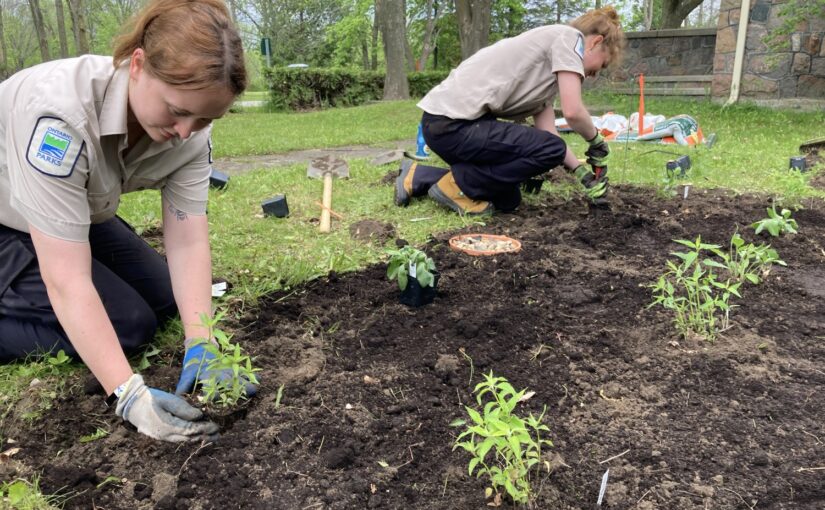Gardens are not something you typically think of when it comes to Ontario Parks, considering we preserve many of Ontario’s natural landscapes. But there’s one type of garden we’re happy to build in our parks: pollinator gardens!
Last summer, two southeastern parks worked hard to build and establish new pollinator gardens. Why? Because planting native plants supports biodiversity and helps our pollinators, some of which have populations in dramatic decline.
Pollinators are animals that move pollen from one flower to another, helping plants make seeds and reproduce.
Animals like butterflies, moths, beetles, flies, bees, wasps, and hummingbirds are all important pollinators. Together, they help keep our ecosystems healthy and functioning.
Interested in learning more? Let’s discover where and what you can find in these gardens.
Sibbald Point Provincial Park
The Discovery team at Sibbald Point started on two new pollinator gardens in late May of last year. One is in front of the Park Store and the other on the lawn of the Information Office, which houses displays on the plants and animals of Sibbald Point.
In such a busy park where recreational opportunities are abundant, projects to support the park’s ecological integrity are often taking place in the background, unknown to visitors. These gardens in the Day Use Areas are there for all to enjoy, most importantly Sibbald’s pollinators!
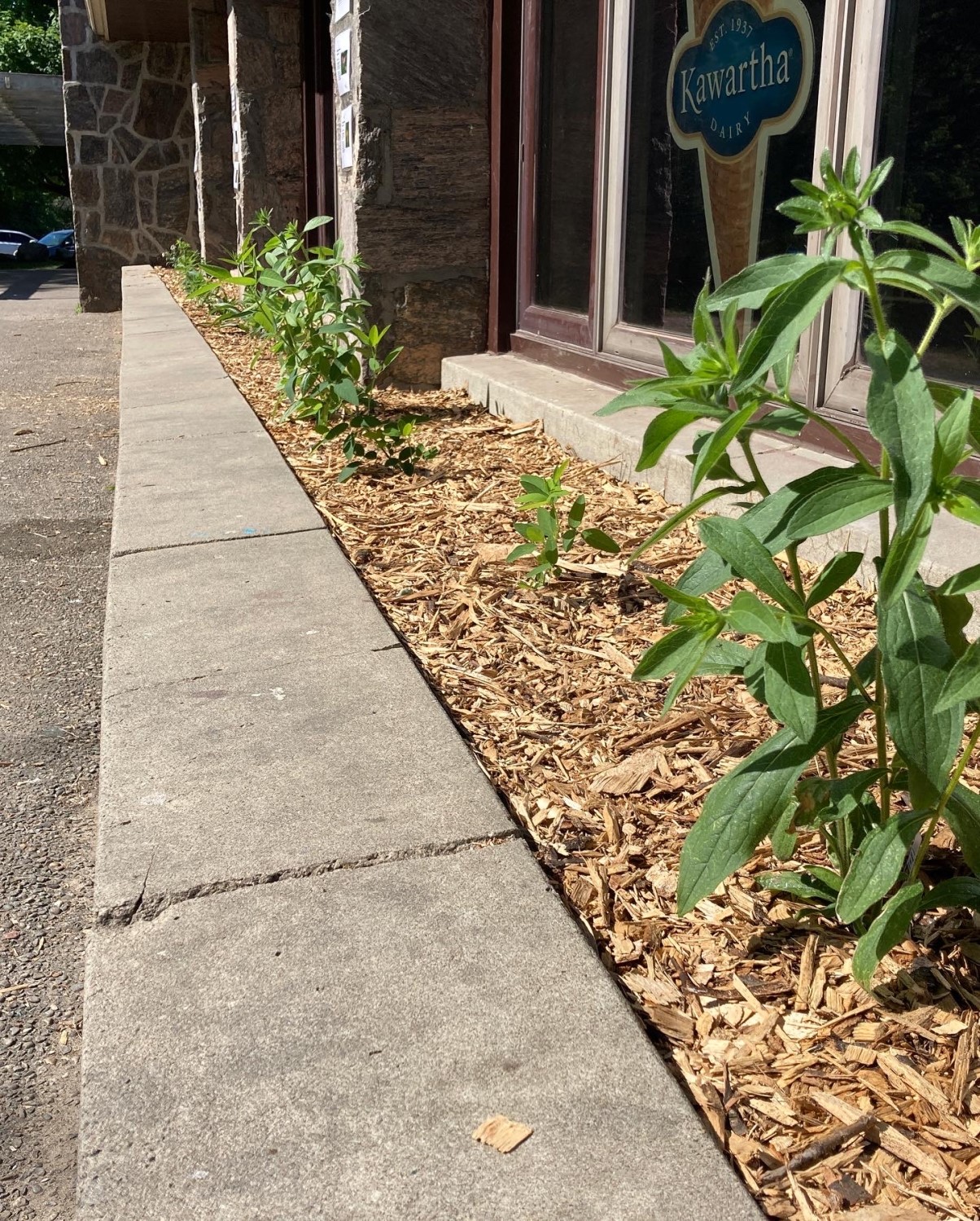
The Discovery team planted a variety of species including Black-eyed Susan, Common Milkweed, Butterfly Weed, Hoary Vervain and Hairy Beardtongue.
Most of these species are currently growing in the park, or have grown here historically. The garden also includes two species of grass: Little Bluestem and Big Bluestem. These grasses are host plants for a variety of insects and grow mainly in tallgrass prairies.
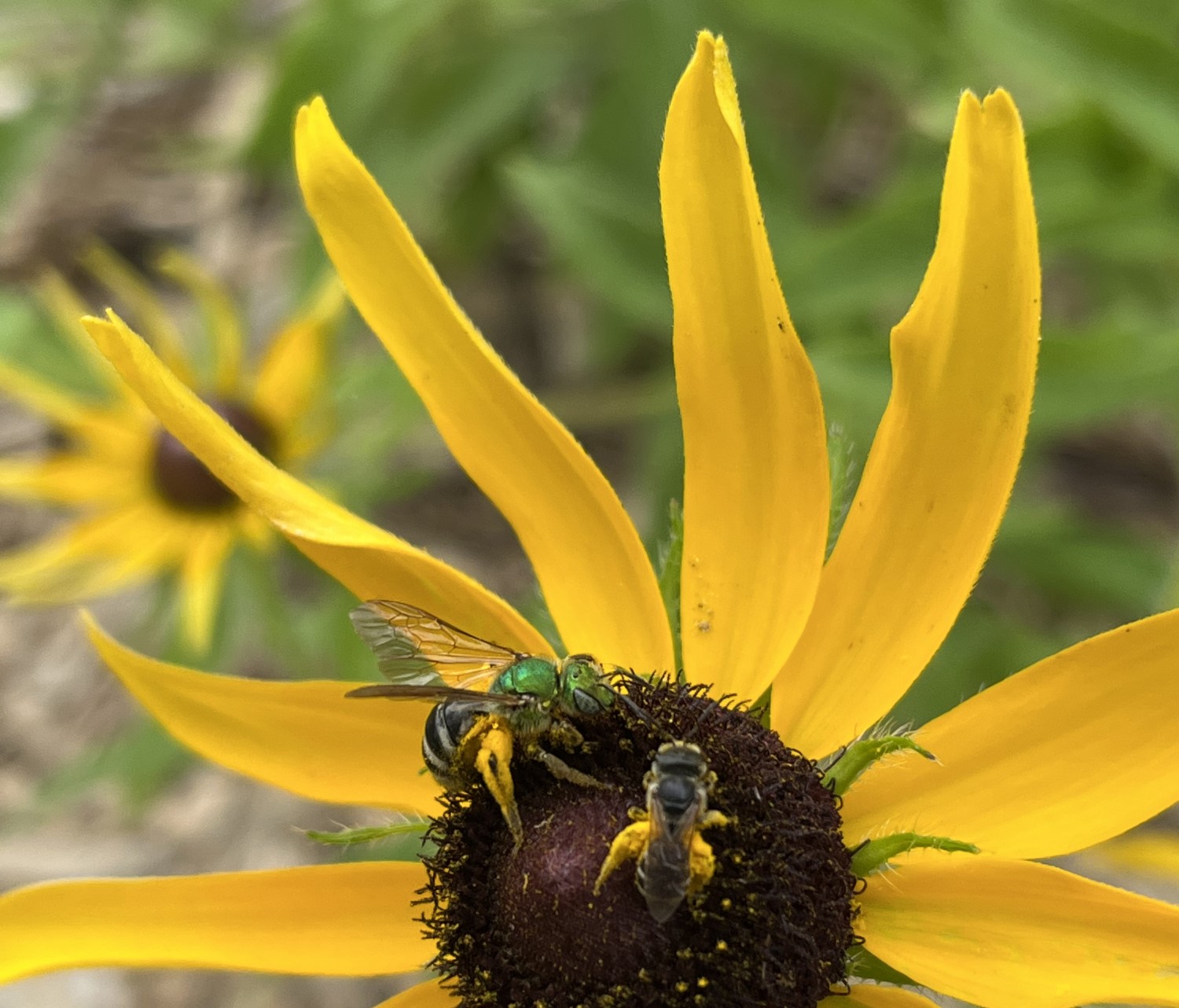
The Discovery team decided to include these grass species as a nod to Sibbald Point’s sister park, Holland Landing Prairie, which features tall grass prairie.
Prairie and savannah ecosystems require clearing or burning of dead plant matter in order to regenerate. The practice of prescribed burns was originated by Indigenous Peoples and has remained a management tool today. Prairies are rapidly disappearing due to urban development and growth of invasive species. Our grasses act as ambassadors to educate our visitors on the importance and struggles prairies are facing.
Two months after their gardens were built, park staff already saw the positive outcomes! Lauren Daniels, a Discovery ranger at Sibbald Point shares her thoughts:
“Planting the pollinator garden was one of the first projects that I worked on in Discovery. Since planting the garden, it has been amazing to see its progress! The plants have grown so much and we get new pollinators visiting every day. Seeing how far the garden has come since the day we planted it has been one of the most fulfilling aspects of this job for me. It truly feels like I have made a positive impact on our ecosystem.”
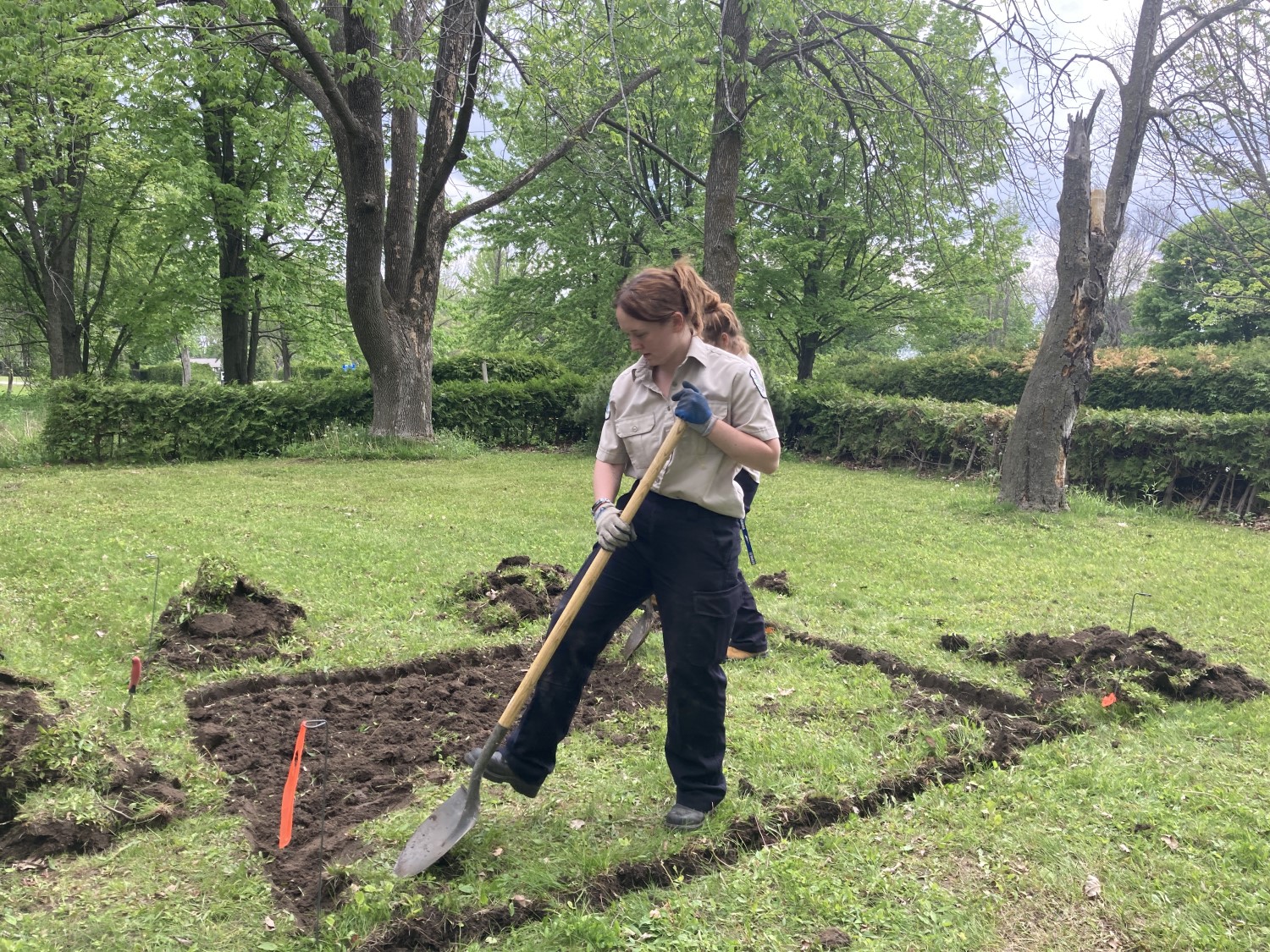
By creating these pollinator gardens, the Discovery team at Sibbald Point hopes to highlight the importance of striking a balance between human use and protecting natural spaces in a busy park.
Sibbald Point is known for its popular beach and campgrounds, but the park has pockets of crucial habitat for pollinator species that often get overlooked. The gardens not only help the pollinators, but give visitors a chance to see hardworking insects up close and become familiar with these beneficial plants.
Park pollinator efforts in 2023
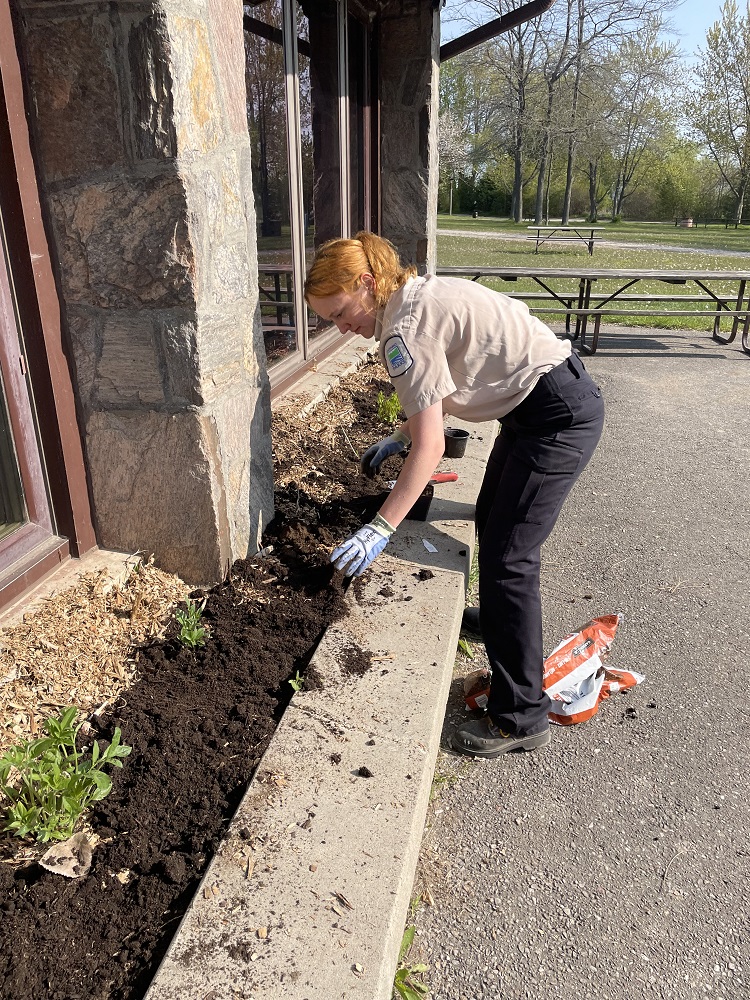
Staff at Sibbald Point continue to expand their gardens!
This year they’ve planted:
- three species of milkweed
- Obedient Plant
- Cylindrical Blazing Star
- White Snakeroot
- Boneset
- Swamp Rose
- Wild Columbine
Staff are excited to increase the biodiversity of the area they’ve planted and watch the plants from last year continue to grow and flourish.
Want to learn more?
Sibbald Point offers drop-in programs about their pollinator garden throughout the summer at the Information Office Garden.
Check out their event page to see when the next drop-in program is happening!
Frontenac Provincial Park
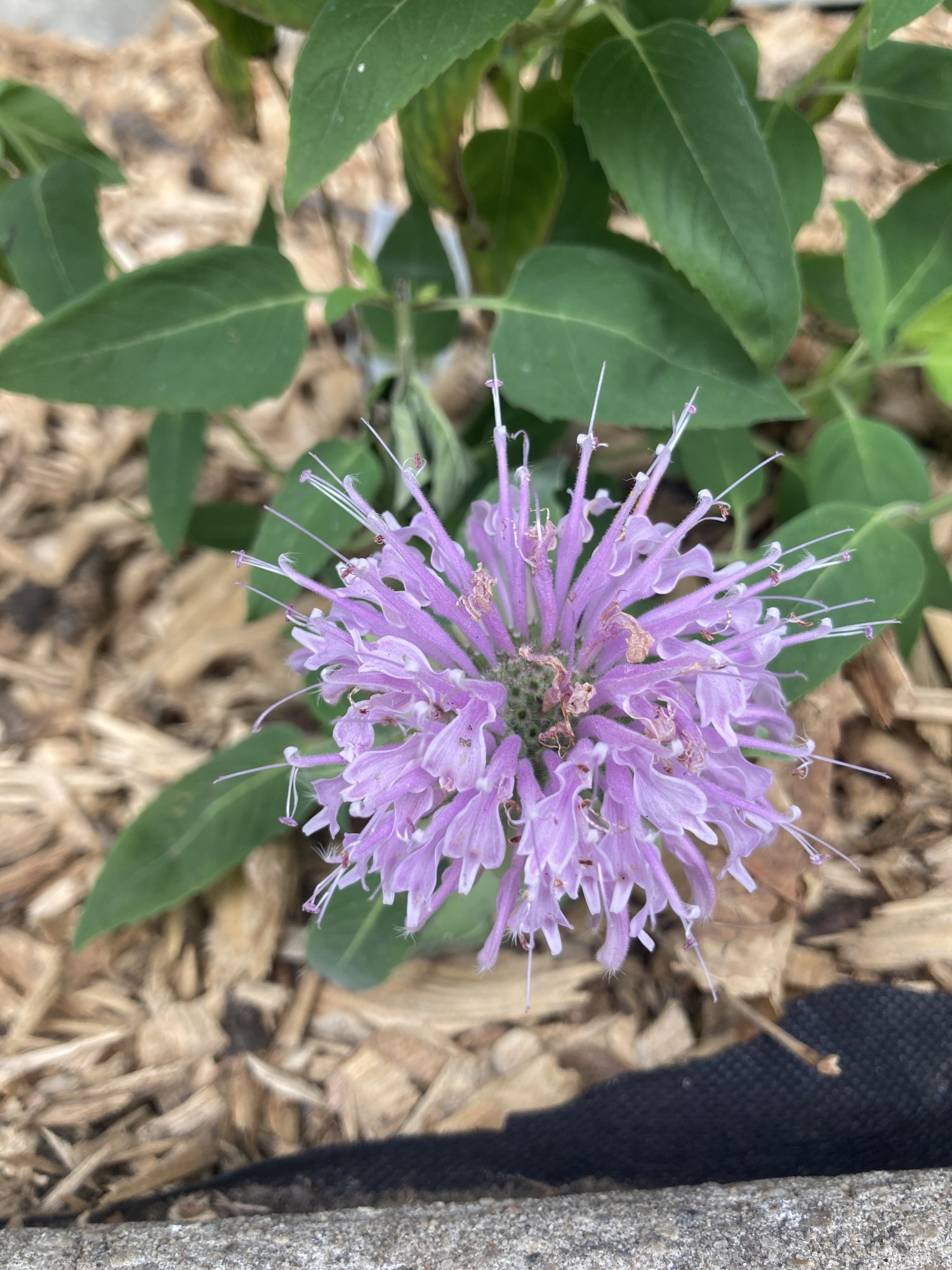
Frontenac is a beautiful backcountry gem located within the Frontenac Arch, one of Canada’s 19 UNESCO Biosphere Reserves. Covering 5,355 ha of land, this park has a high diversity of plant species and is home to many pollinator species!
Last spring, park staff were discussing ways to support their local pollinator population and determined that planting a pollinator garden was a great way to do this while also showcasing to visitors why pollinators are important for our ecosystems.
You can find their new pollinator garden and interpretive sign in the park’s picnic area by the park office.
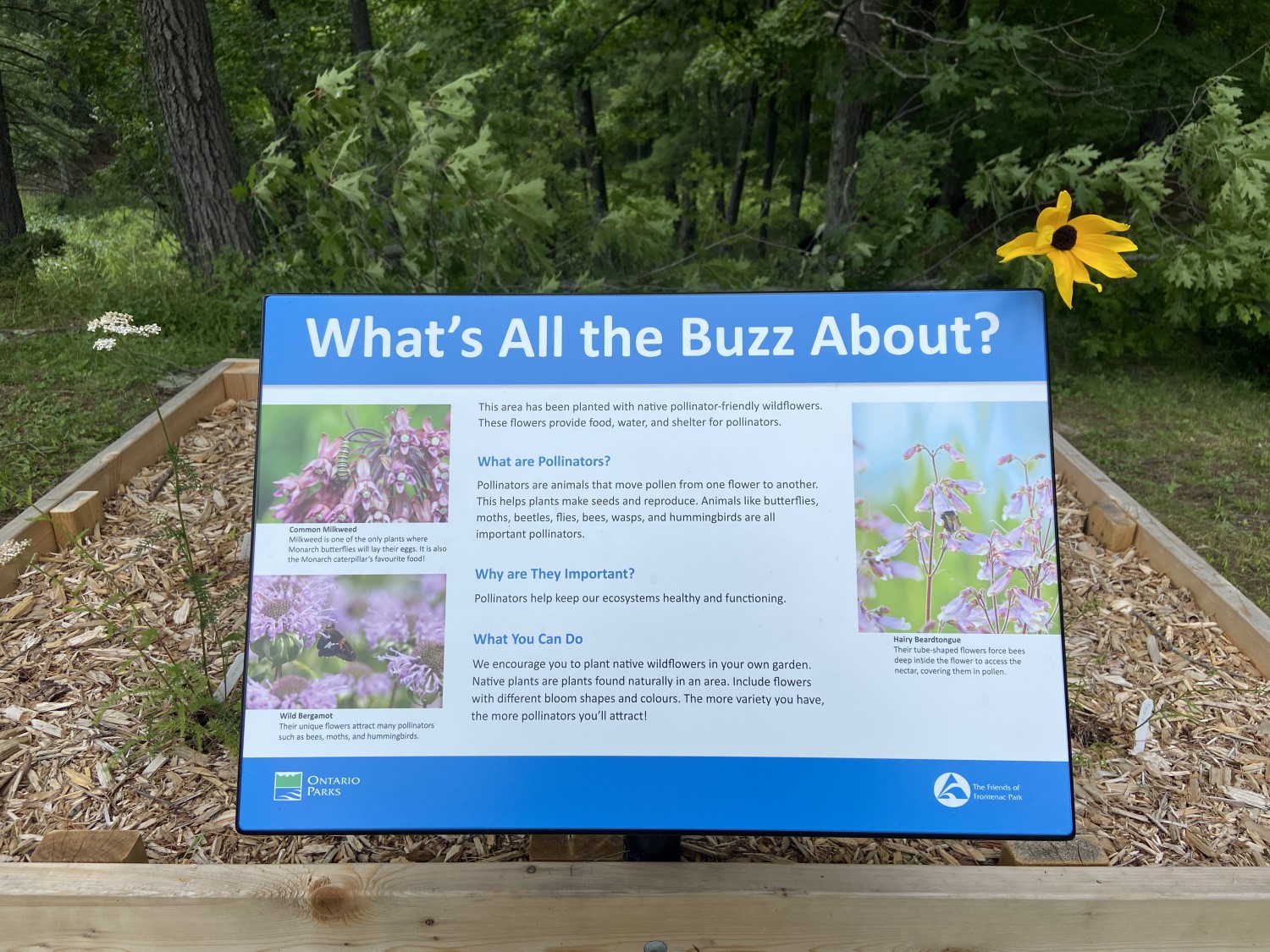
The Frontenac team planted native wildflowers with a diverse range of bloom time and colours to attract a variety of different pollinators. Some of these plant species include Spotted Joe-pye, Pearly Everlasting, Wild Bergamot, and Harebell.
Some of the species planted in the garden not only provide nectar for pollinators, but serve as a host plant for some butterflies as well. American Lady, Painted Lady and several species of skipper butterflies will lay their eggs on Pearly Everlasting and the plant then provides as a nice meal for the growing caterpillars.
Being a backcountry park, there’s plenty of wildlife nearby which can pose a challenge for new gardens. Park staff suspect local deer have enjoyed snacking on the Evening Primrose and Showy Tick Trefoil that were planted, but thankfully, these plants are resilient and are growing back!
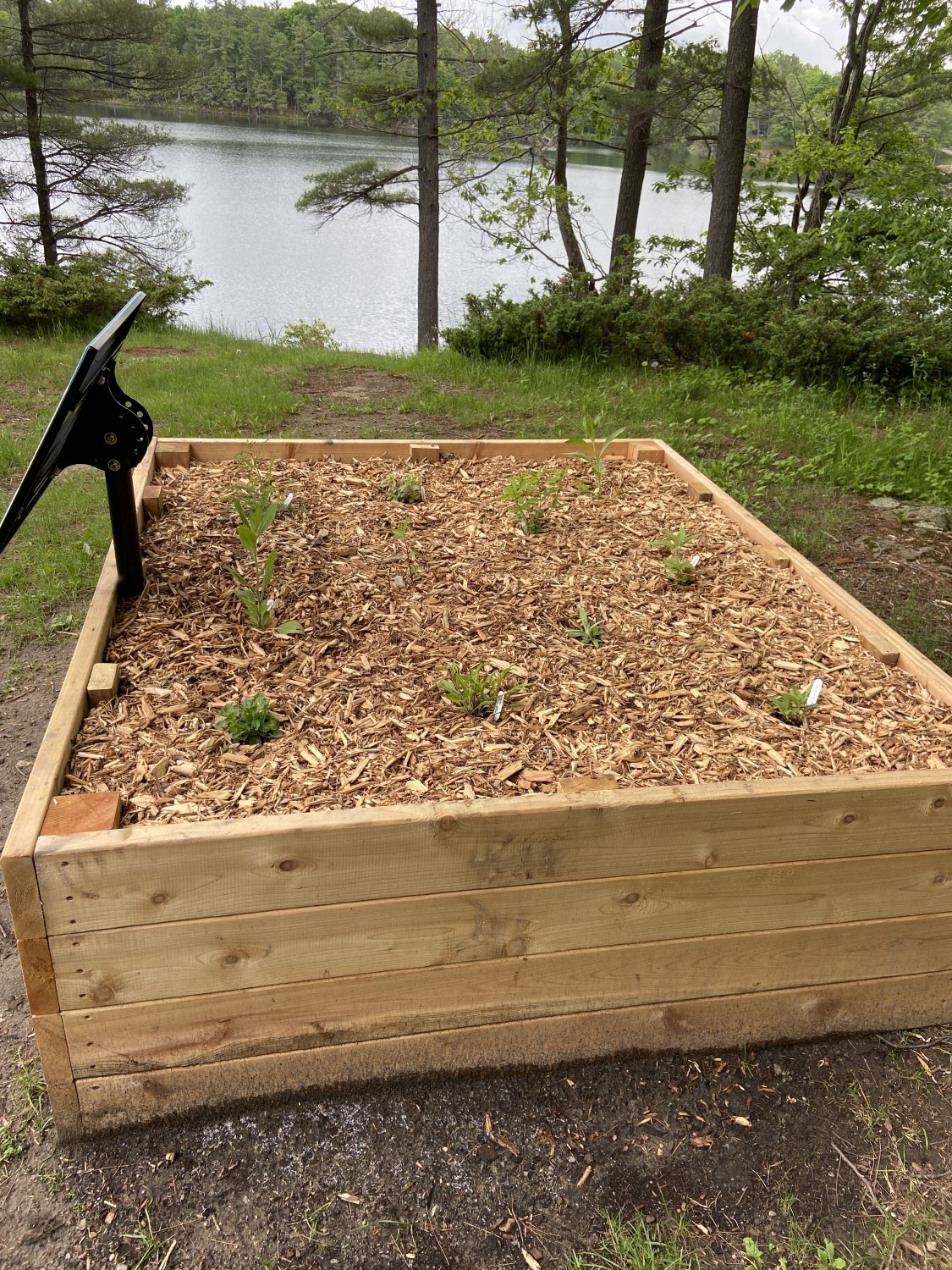
While the garden appeared small right last summer, it will soon be lush with pollinating plants!
Typically, gardens do not flourish in their first year and the plants are focused on surviving in their new environment. This summer, these plants will begin to grow, thriving in their third year!
Great work protecting pollinators, Sibbald Point and Frontenac!
The next time you find yourself at Sibbald Point Provincial Park or Frontenac Provincial Park, be sure to stop by their pollinator gardens to find out which pollinators are enjoying them!
Remember: small gardens can make a big impact! Consider creating a garden for local pollinators at your home!
